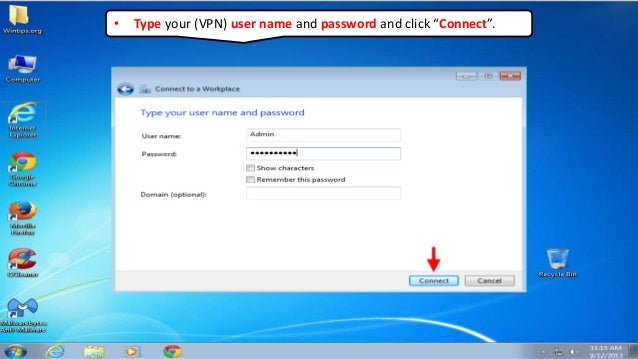Vpn Client For Windows 8

Applies To: Windows Server 2012 R2, Windows Server 2012 It is becoming very common for computer users to connect to networks by using personal devices such as laptops, slates, and tablets. For organizations that support it, remote users can connect to the corporate network from their personal devices. The users can connect directly through the corporate WiFi by using their domain credentials, or by using virtual private network (VPN) connectivity. This topic describes the detailed steps and recommendations for deploying a VPN so that users running Windows 8 can connect remotely.
If you have Cisco VPN Client installed in Windows 8.1, you are likely receiving a 'Failed to Enable Virtual Adapter' error when trying to connect. This fix sho. Download Free VPN for Windows 8. Free and safe download. Download the latest version of the top software, games, programs and apps in 2018. Cisco IPSec VPN Client is not supported on Windows 8. Cisco VPN client (5.0. Max Payn 11 Mb there. 07.0440 for x64, 5.0.07.0410 for x86) is working for some people. But for that you need to apply a small Registry workaround as below –. Open Registry editor regedit in Run prompt.

It is meant to help organizations enable users to use their personal devices for common Windows 8 deployment scenarios. Deploy Windows 8 VPN client This section describes several methods for deploying a VPN, and it explains the IT pro and remote user experiences in detail. Some of the common profile management tasks such as editing, deleting, and profile renaming are also discussed briefly. A VPN profile deployment includes setting up the profile on the client device and preparing the relevant settings that are required to access the corporate network. Note Windows RT does not support the installation of third-party applications. However, the Windows VPN client is available on Windows RT, and it is capable of connecting to third-party solutions.
The third-party VPN solutions may need to be configured to allow the connection, and third-party VPN vendors own this support. The Windows VPN client can be provisioned by the methods that are described in this section (excluding the Connection Manager Administration Kit). The following VPN connection profile deployment methods are available for unmanaged client devices (including devices running Windows RT): • • • Use self-service portal On devices running Windows RT, an integrated management client is available that can communicate with a management infrastructure in the cloud to deliver line-of-business applications to the users.
There are two parts to this management client: • Agent: The built-in system component. • Self-service portal (SSP): The application that is used to browse for and install the line-of-business applications made available to them.
IT pros can also use this SSP to deploy VPN connections on Windows client computers. The following subsections explain the IT pro and remote user experiences for a profile that is set up by using the SSP. IT pro experience • To set up the profile, simply open the server management interface and provide settings for the VPN profile, then click Finish. • The IT pro can also update the profile (if needed) through the server management interface, and no action is required from the users.
Remote user experience Authorized users self-deploy the VPN setup on a device running Windows RT by navigating to the Control Panel application called Company apps, and then providing their company email address and password. The agent then automatically configures the VPN and other features on the client device, based on the instructions provided by the organization’s management infrastructure. Use Windows PowerShell scripts Simple Windows PowerShell scripts can be used by IT pros to help remote users install and configure VPN connections on unmanaged client computers. These scripts serve a dual purpose: • To set up VPN profiles on devices • To configure network-specific settings (such as prepared routes and network access point (NAP) settings) on the client device The following subsections explain the IT pro and remote user experiences for installing the VPN profile by using these scripts. IT pro experience • The IT pro creates an external web portal that is accessible to remote users when they connect with domain credentials.
This web portal is published to all the corporate network users who intend to connect to the corporate network by using the VPN. • The IT pro creates a Windows PowerShell script and adds it to the web portal with setup instructions and guidelines.
The following Windows PowerShell script to create the VPN profiles is very simple. Other Windows PowerShell sample scripts and documentation are available on Microsoft TechNet to help IT pros create corresponding scripts for their network deployment. Note By default, Add-VpnConnection keeps split tunneling disabled for a VPN connection. For more information, see.